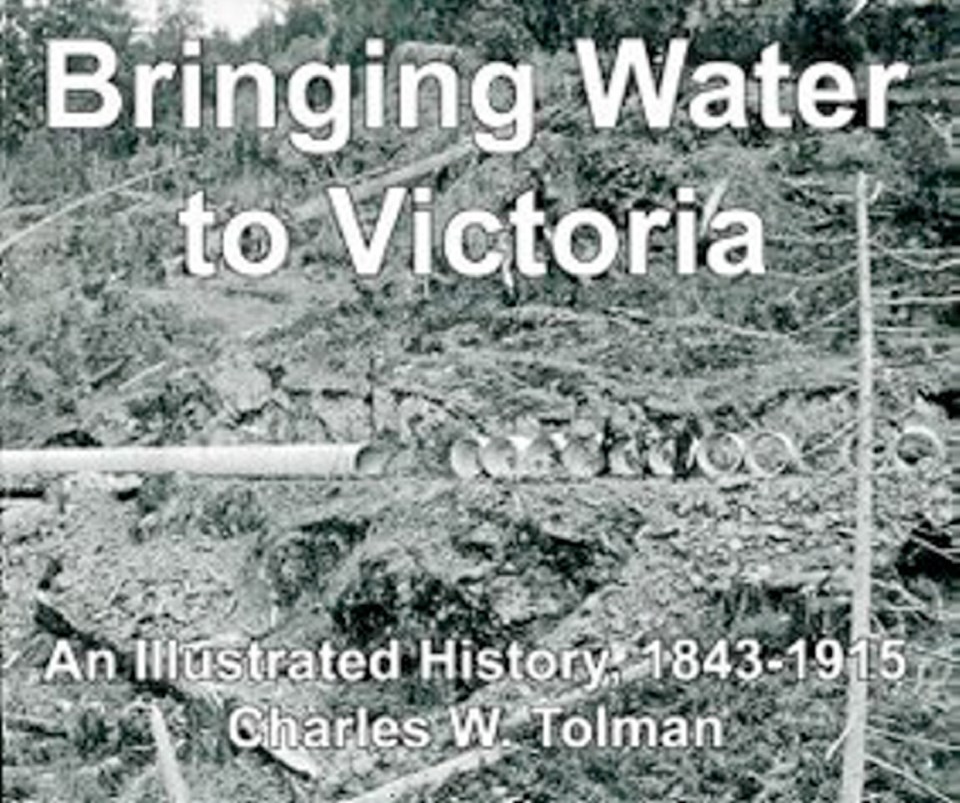Bringing Water to Victoria: An Illustrated History, 1843-1915
By Charles W. Tolman
Sooke Region Museum, 220 pp., $19.95
We take our water for granted; we turn the tap and out it comes. It’s clean, it’s safe and it’s ours.
On the other hand, water should never be taken for granted. Without a reliable source of water, we cannot start a community, because we need water to live.
The First Nations knew that all along, and set up their homes close to water supplies. The people who built the Hudson’s Bay Company fort knew that as well, and arranged to have water brought in from Spring Ridge by horse-drawn cart.
That was Victoria’s water supply at its simplest. Over the years, the story of the water system became much more complicated.
The first pipeline, linking Spring Ridge to Government Street in the growing town of Victoria, was built in 1863. It was made up of hollowed-out logs.
Ten years later, work started at Beaver Lake, which would become, with Elk Lake, a reservoir for Victoria. In 1874, a dam was built at the south end of the lake, and water started flowing into Victoria through steel pipes in the fall of 1875.
The quality of the water was a problem from the start, and the quantity of water available also raised questions about the long-term viability of the Beaver and Elk solution.
By the end of the 19th century, the city was looking west — to Goldstream and to Sooke Lake.
After much debate — this is Victoria, after all — the city asked the voters to approve the development of Sooke Lake as the heart of a new water system. The voters gave the thumbs-up in January 1911, and the rest is history.
Well, admittedly, it’s much more complicated than that. There were false starts and legal issues before the system was completed in 1915.
The troubles faced by the water pioneers are covered in detail in Charles W. Tolman’s Bringing Water to Victoria, published to mark the centennial of the service.
Tolman has done a remarkable job of telling the story, coming through old newspapers and historic documents to get to the bottom of what was going on. The water woes were in the Victoria Daily Times and the Daily Colonist almost every day, it seemed, and piecing together a coherent tale would have taken both talent and patience.
The end result is well worth the effort. While we expect that water will flow when we turn on the taps, there are many parts of the world where the water service cannot compare with ours. Before we take it for granted, we should try to understand the hard labour that went into providing the water service that we enjoy.
The book includes dozens of photographs, most of them not seen in books until now. The photos include some classic garbage-bin finds; these ones were reclaimed from curbside in Oak Bay about 35 years ago.
These photos, which are unlike any others available, help to remind us that records of history can be fragile. How many thousands of other photos, priceless snapshots of early life in Victoria, have been trashed over the years?
A book such as Bringing Water to Victoria helps to preserve memories of the past, but also brings it to light. It is a fine addition to the history of Greater Victoria, and one that touches all of us where we live.
The reviewer is the editor-in-chief of the Times Colonist.



